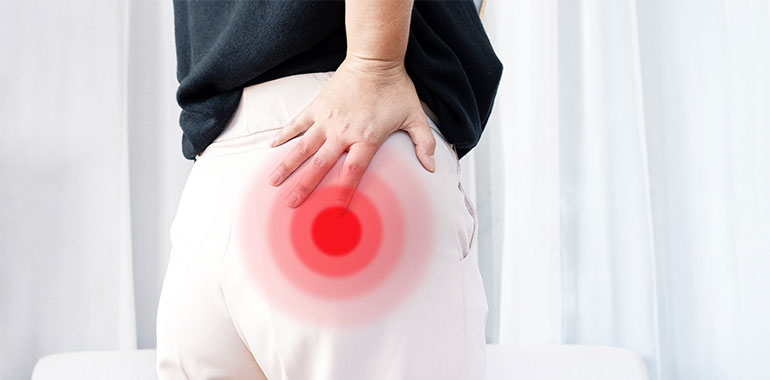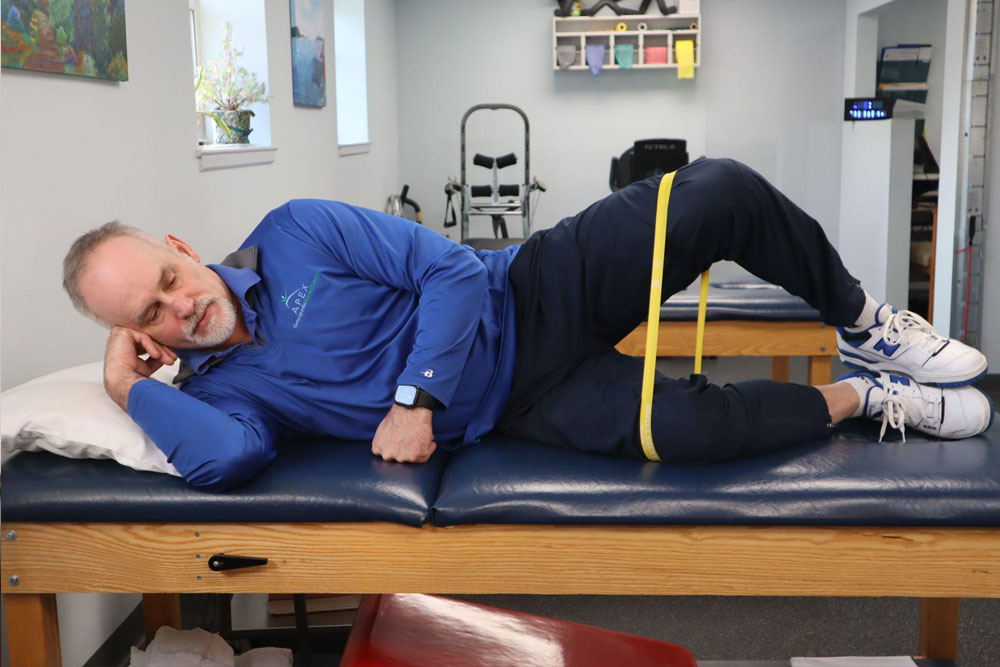
Piriformis Syndrome OR Disc Herniation? How to Differentiate Can Be a Pain in the Butt!
This can be tricky and confusing to tell the difference between these two conditions for both the physical therapist and the patient. A thorough history of the patient’s problems, current activities, paired with solid clinical examination testing range of motion, strength and functional movement patterns is essential.
What is Piriformis Syndrome?
This syndrome is considered an entrapment syndrome where by the Sciatic nerve is compressed when passing under the Piriformis muscle when passing to the lower extremities typically on one lower extremity. There are cases that the Sciatic nerve root passes under, through and over the piriformis muscle but 89% are known to pass under according to several anatomical studies.
This condition is very similar to Carpal Tunnel Syndrome in the wrist in which the median nerve is compressed as it passes through the carpal tunnel except in the case of Carpal tunnel syndrome the medial nerve is surrounded by bone and ligamentous structures.
What can Cause Piriformis Syndrome?
This condition can be caused by multiple factors:
What is the location and function of the Piriformis?
It is attached on the greater trochanter of the hip and spans over to the anterior aspect of the sacrum. The primary function of the Piriformis is as a hip external rotator when the hip is extended and hip abductor when the hip is flexed. Therefore when treating this syndrome different stretching and strengthening will affect different areas of the muscle depending on the position of the hip. This muscle is important for on rotation movements and stabilization of the hip and when irritated in can affect the sciatic nerve that typically passes under it supply sensory and motor nerves to the lower extremities.
Who typically gets Piriformis Syndrome
It is more common in females than males and typically occurs in the 40-60 years of age. It can more associated with people that engage in certain repetitive activities requiring hip rotations or more sedentary individuals truck drivers, taxi or people that work extensively in sitting.
Common symptoms of Piriformis Syndrome
What tests do we use to diagnose Piriformis ?
When a patient arrives in the clinic we first take a thorough history of the problem and activities that tend to provoke or relieve the patients symptoms. Understanding what he patient has tried and not worked by another physical therapist or trainer can be quite useful In addition many patients have scrolled the internet and have tried many self treatments which can be an excellent source of information before we start checking a patient’s mobility and special tests. We have seen many of these tests we use in the clinic are important. However the diagnosis is based on multiple factors which include the following tests:
These tests can put pressure on other structures like a person with facet syndrome, a herniated or bulging disc, hip osteoarthritis and sacroiliac condition which can cause a false positive test. We must interpret these findings not in isolation but combined with the other aspects of the evaluation.
One of key parts of the evaluation is to rule out the possibility that the lumbar spine is not the root of the problem. In the clinic since the chance of many of a Piriformis syndrome is typically rare at 0.3% to 6% of the population of people suffering from lower back pain and/or sciatics according the Cleveland Clinic.
At Apex Orthopedic Rehabilitation we use a McKenzie Evaluation format to rule out the possibility of a lumbar spine problem versus a piriformis syndrome. The McKenzie evaluation uses repeated movements of the lumbar spine in standing and supine positions to help guide physical therapists as to the most likely source or root of the problem. To learn more about the McKenzie method you can check out there web site at the McKenzie Institute or learn about it on Apex Orthopedic Rehabilitation’s You Tube Channel in the video titled Will the McKenzie Method Help My Back Pain?
When looking at the two conditions we have looked at a Comparison of Symptoms between Piriformis Syndrome and a Lumbar Disc Herniation or Bulge and a second chart comparing the clinical features.
Comparison of Symptoms
Feature | Piriformis Syndrome | Disc Herniation |
|---|---|---|
Pain Location | Buttocks, radiating down the leg | Lower back, radiating down the leg |
Pain aggravation | Sitting, prolonged activity, pressure | Bending, lifting, prolonged sitting |
Nerve Involvement | Sciatic nerve compression by muscle | Sciatic nerve compression by disc |
Tingling/Numbness | Possible in buttocks and leg | Common, especially in foot/toes |
Weakness | Mild, if present | More pronounced, can affect gait |
Comparison of Clinical Features
Feature | Piriformis Syndrome | Disc Herniation |
|---|---|---|
Straight Leg Raise Test | Often negative | Usually positive |
Palpation Sensitivity | Tenderness over piriformis muscle | Tenderness over lumbar spine |
MRI Findings | Typically normal | Disc bulge/herniation visible |
Response to Stretching | Improves with targeted stretching | May worsen with certain movements |
These tables provide an overview of the key differences to help with differential diagn
How we treat Piriformis Syndrome
It all depends of the findings from the evaluation but these are common treatments:
Stretches for Piriformis Syndrome
1. Knee to Chest Cross Body


Begin by lying on your back with both legs straight. Take your right knee, bend it, and grab with your right hand on the knee and left hand over the ankle.
Then pull with both hands aiming for your right knee going towards the left shoulder.
Start with 5 second holds and eventually progress to 30 sec holds.
2. Pigeon Pose

Start on all fours, arms and legs shoulder-width apart. Move your right knee toward your right wrist, placing your shin on the floor. Ideally, your right shin should be as parallel to the front of your mat as your mobility allows. Slide left leg back, heel up, toes flat. Slide hips back until shoulder nears opposite knee. Hold for 5 seconds, build to 30. Repeat on other side. Aim for 3 sets per side daily.
3. Figure 4 Stretch

Begin by lying on the back with both legs bent and feet flat on the ground.
Relax your shoulders and neck and avoid tensing them and lifting off the floor. Hold the stretch for 5 seconds initially and slowly work up to 30 seconds. Aim to complete one set of three stretches on each side.
4. Prone Hip internal Rotation Stretch

Strengthening for Piriformis Syndrome
Phase 1.
Hip abduction/Hip Circles
Glute Bridge


Clamshells

Phase 2.
Body Weight Squats - Goblet Squats


Bulgarian Split Squat




